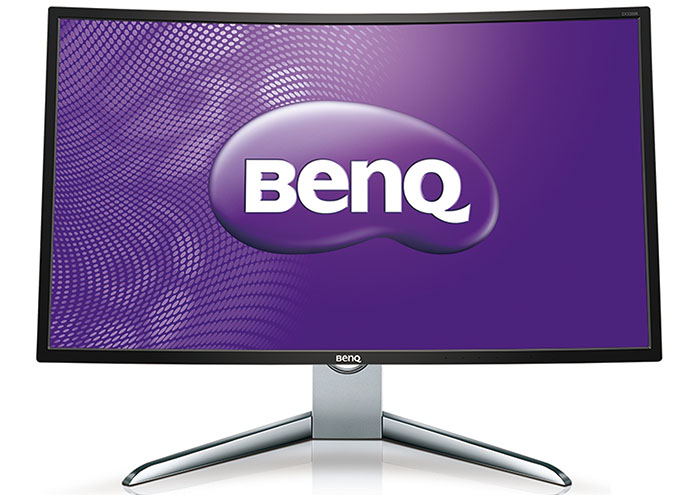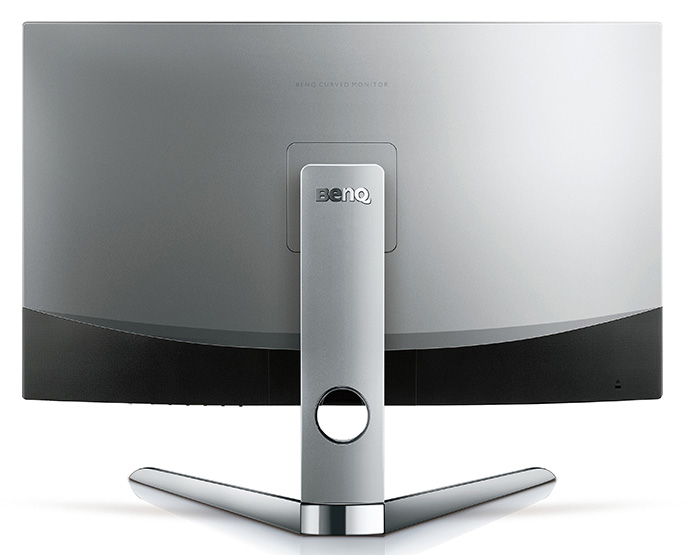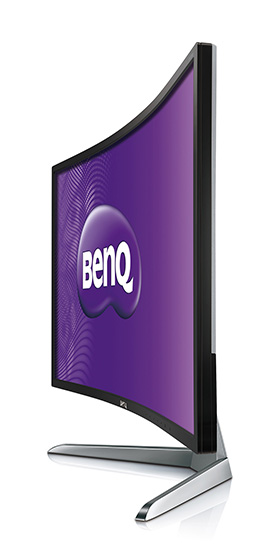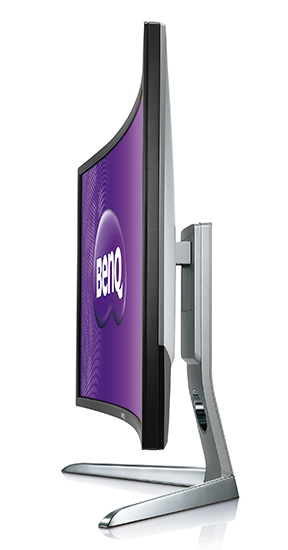Introduction
BenQ has been steadily increasing its footprint in the gaming-monitor space in recent years. Part of that strategy has been purchasing Zowie - the eSports specialists - and pushing into high-end monitors with 4K displays and adaptive-framerate technology such as FreeSync and G-Sync.
In the productivity space, BenQ has also introduced super-widescreen monitors in varying resolutions and curvatures. Combining the two, BenQ has recently introduced the EX3200R - a 31.5in screen with a native 1080p resolution and 1800R curve. What's more, it has AMD FreeSync compatibility at up to 144Hz.
And it's an attractive-looking monitor, too. The metal base attaches to the mounting arm via a single screw, which in turn has the usual clip into the back of the screen. All told, you are up and running within five minutes of first opening the box. BenQ includes all of the various cables you would expect, and keeping a relatively svelte profile, power is provided by a small external (65W) brick that plugs into the centre of the back.
The main frame, meanwhile, is plastic, and BenQ adds in seven buttons just to the right and below the logo. There's no advanced joystick or touch-capacitance at play here, yet the EX3200R's control system is intuitive and simple enough.
Up to 25 degrees of tilt and 60mm of height adjustment offer easy setup, though do be aware that due to its size there is no option to have it in portrait mode unless mounted on a wall. The sheer size makes it quite heavy, at 9.1kg, but it's sturdy enough not to move at all even if you're a keyboard basher.
The super-clean lines are helped by having no real interruption on the back. The centre section is home to inputs - DisplayPort 1.2, mini-DisplayPort 1.2, HDMI 1.4 (no need for 2.0 here), and a headphone jack. You'll need to use DisplayPort to achieve the lofty refresh rate, mind, as venerable HDMI tops out at 120Hz.
BenQ sensibly includes a faceplate that hides most of the cables so it's a screen for those who like tidy builds. Do be aware that the EX3200R has no built-in USB 3.0 hub, if that matters to you, and nor are there any speakers.
The curvature of monitors is expressed in a number that denotes the radius size if the curve was to complete a full circle. The higher the number, the shallower the curve, so a 3000R screen would have a 3,000mm (3m) radius whilst a more-curved screen, like the BenQ, rated at 1,800, would have a radius of 1,800mm.
Monitors, being smaller than TVs, often have stronger curves, and the 1800R is immediately noticeable on this screen. A 3000R would be more subtle, of course, yet one quickly gets used to the more pronounced curve.
BenQ uses a 31.5in, 8-bit VA panel with a 16:9 aspect ratio and a 72 per cent coverage of the NTSC gamut. This means it's a scaled-up panel rather than super-widescreen, but that also has the knock-on effect of reducing the pixel density. We routinely see 4K panels of this size, intimating that the EX3200R is less for productivity and more for, say, gaming.
Viewing angles are very good for a VA-type screen while the quoted contrast ratio of 3000:1 is impressive. Rather more average is the 300 cd/m2 brightness.
And that gaming angle takes on more pertinence when you appreciate this screen offers AMD FreeSync support at 144Hz. This is a monitor for those that prioritise frame rate over pixels, and the EX3200R has a wide supported range of 48-144MHz. If you drop below this, AMD's Low Framerate Compensation Technology kicks in and smooths the gameplay by adding in additional frames at the low end. The upshot is smooth-ish play at even 25fps.
The obvious reason why BenQ has gone for this screen is because it is the only one available if you want this size and refresh rate. It's also present in the Acer XZ321Q and Agon AG322FGX, and anyone wanting a 2,560x1,440 screen of the same size will have to make do with a maximum 75Hz refresh rate: horses for courses, etc.
A downside to looking at a very specific size and refresh rate is increased cost. The EX3200R retails for around £460, or very much in premium territory, while the comparable Acer is around £400. There's no way around this, if you want the sheer screen size.
Interestingly, the company doesn't pitch it as a gaming monitor per se, rather focussing on its everyday use and effectiveness as a movie-watching screen, with the gaming goodies a bonus on tap. In effect, it tries to be a multi-purpose monitor suitable for a wide range of use cases.














